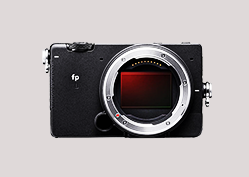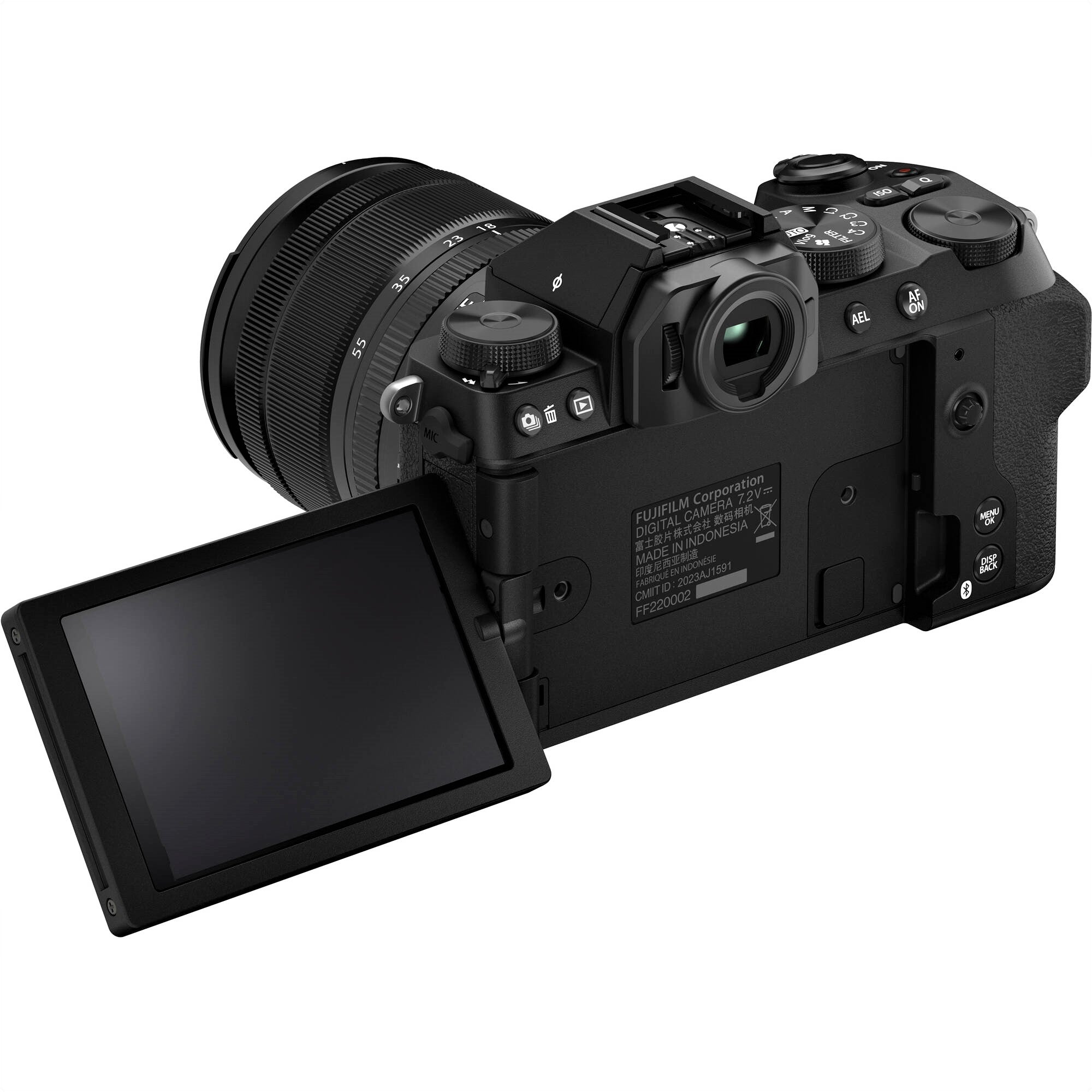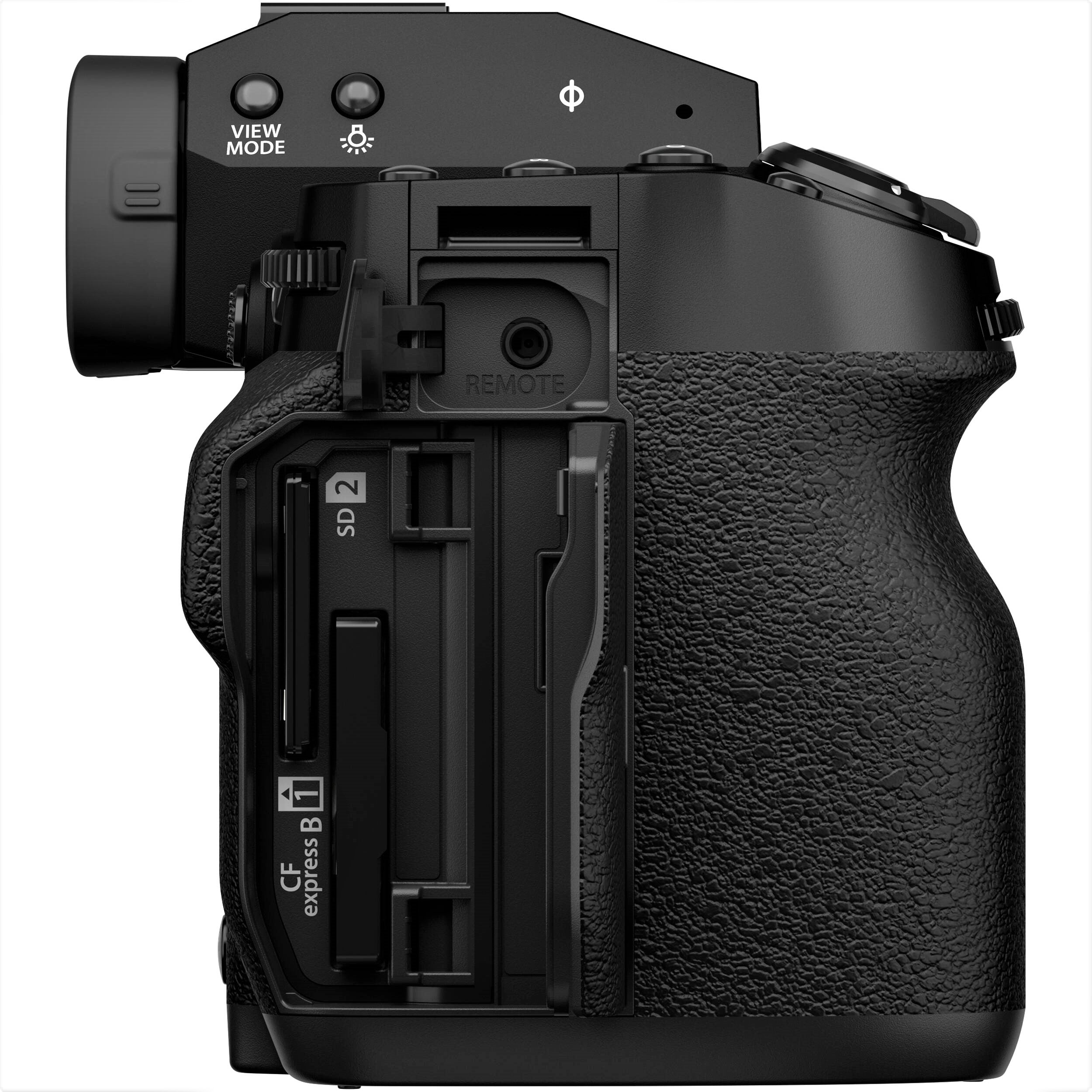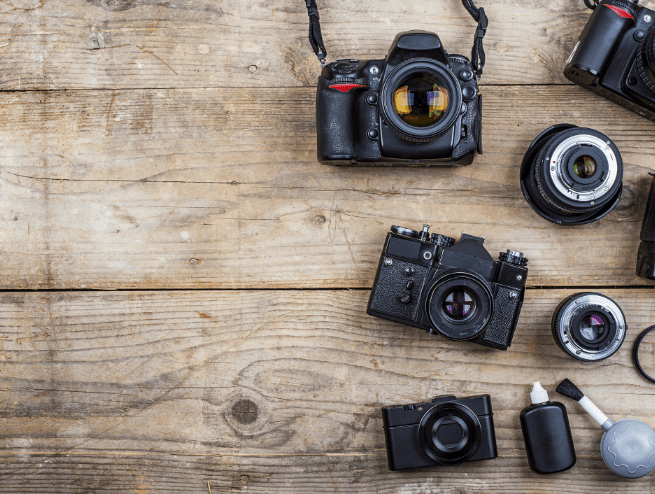In a world where sharing moments through pictures is key, cameras are our trusted friends. They help us capture moments, preserve memories, and spark creativity.
Photography spans a wide range of devices. At one end, there are DSLRs. These cameras offer control and a manual feel. They suit those serious about photography, providing high-quality images that endure over time. Settings like shutter speed and aperture can be adjusted to get just the right shot.
At the other end are smartphone cameras. These are easy to use and great for sharing photos quickly. They're always getting better, thanks to new technology that makes up for their small size. This kind of camera is perfect for capturing moments on the go.
Both types of cameras have their place. DSLRs are for those who enjoy learning and refining their skills. Smartphone cameras, however, are better for spontaneous pictures. Choosing between them depends on what you want from your photography.
Knowing the differences can help all photographers pick the right tools for their needs. Whether you're starting out or have years of experience, the right equipment can help you capture not just images, but emotions.

This guide will walk you through different camera types. Each one has something unique, and we’ll see how they fit various uses.
We’ll break down their features so you can easily understand why they matter. This will help you decide which camera suits your needs best.
DSLR (Digital Single-Lens Reflex) Cameras:

DSLR cameras are essential for both professional and hobbyist photographers. They are known for their solid build and multiple uses. Their key feature? A reflex mirror system. This system sends light from the lens to the viewfinder. Photographers can see exactly what the lens sees. This is crucial for accurate photo composition.
DSLRs are very adaptable. They work with many lenses, from wide-angle to telephoto. This means they can capture everything from vast landscapes to tiny details and quick moments. Users also appreciate the manual settings. These settings control light and motion, helping create unique and creative photos.
Photographers who like to experiment prefer DSLRs. They offer control over every part of the photo process, from focus to exposure. This makes it easier to turn a simple photo into something special.
Even with new mirrorless cameras and smartphones, many still choose DSLRs. They are better for certain types of photography like wildlife and sports. The physical feel of a DSLR also makes photography more enjoyable.
DSLRs are durable too. They often last longer than other cameras, especially in tough conditions. This reliability makes them a top choice for photographers who need dependable equipment.
In short, DSLRs remain popular despite new technology. They provide accuracy, versatility, and reliability, making them valuable for anyone serious about photography.
Features:
- Optical viewfinder for precise composition.
- Interchangeable lenses for versatility.
- Manual control over settings.
- Large sensors for high-quality images.
Pros:
- Advanced control for creative photography.
- Excellent image quality and low-light performance.
- Wide range of compatible lenses.
Cons:
- Bulkier and heavier than some alternatives.
- Mirror mechanism may lead to vibrations.
- Learning curve for mastering manual controls.
Notable Brand: Canon
Canon's EOS series is a standout in the DSLR market. It appeals to everyone, from beginners to pros. The Canon EOS Rebel SL3 is especially notable for its compact size and strong features.
This camera is perfect for those who want something light but functional. It has a 24.1-megapixel sensor, giving you detailed high-res images. The DIGIC 8 processor improves image quality, even in low light. This makes the SL3 great for any photo op, from family events to pro shots of landscapes.
It also has 4K video recording—rare for its price. This is great for aspiring videographers. The Dual Pixel CMOS AF system helps keep videos sharp and clear, even with movement.
The SL3 is easy to use. Its vari-angle touchscreen LCD makes tough shots simple. While it’s easy enough for beginners, it also has advanced options for pros.
Overall, the EOS Rebel SL3 shows Canon's dedication to quality and innovation. It offers ease of use, high-end features, and superb image quality. This makes it a solid choice for anyone serious about photography, or looking to step up from a basic model.
Mirrorless Cameras:

Mirrorless cameras are reshaping photography. They ditch the old mirror mechanism of DSLRs, making them lighter and more compact. This isn't just about looks; it changes how they work.
They use a digital viewfinder, giving a live preview that shows changes in real time—like exposure and focus. This means photographers can see exactly what the image will look like when they take it.
These cameras are also versatile, packed with the latest tech. They offer better image stabilization, quick autofocus, and can shoot more frames per second. This is great for shooting clear photos in fast-moving situations.
They're especially good for travel photography, adapting easily to different environments, whether it's rough terrain or busy streets.
With mirrorless cameras, photography becomes more intuitive and accessible. They're a favorite among both hobbyists and pros, pushing the boundaries of what's possible in capturing moments, anywhere in the world.
Features:
- Compact and lightweight design.
- Real-time digital display or electronic viewfinder.
- Interchangeable lenses.
- Silent shooting mode.
Pros:
- Portability and ease of use.
- Instant feedback through electronic viewfinders.
- Advanced autofocus systems for quick focusing.
Cons:
- Limited battery life due to electronic components.
- Smaller selection of lenses compared to DSLRs.
- Electronic viewfinders may have slight lag.
Notable Brand: Fujifilm
Fujifilm's X-series mirrorless cameras mix nostalgia with modern tech. They're popular for their great image quality and unique look. These cameras feel like old-school photography. They even have built-in effects that mimic old film styles, so photos look special without extra software.
Take the Fujifilm X-T5, for example. It's one of the best out there. It has amazing sensors that capture clear, vibrant photos. Plus, it's good for videos too, thanks to its sharp autofocus and video features.
The X-T5 is durable, packed with advanced features, and has a classic design. It's perfect for photographers who care about quality and style. Buying this camera means investing in your creativity. It's great for anyone who loves taking beautiful photos and enjoying the process.
Compact Cameras:

Compact cameras, also called point-and-shoot cameras, are great for photographers who prefer simplicity and convenience. These cameras have automatic settings and fixed lenses, so you don't need to adjust settings or change lenses manually.
They're super easy to use and perfect for quickly capturing high-quality photos, especially during spontaneous moments.
Because they're small and portable, compact cameras are ideal for travel or daily use. You can easily slip them into your pocket or bag. Plus, modern compact cameras come with advanced features like image stabilization and Wi-Fi.
This means you can easily share your photos. If you want a simple and effective way to capture everyday moments, a compact camera is a fantastic option.
Features:
- Small and lightweight for portability.
- Automatic settings for ease of use.
- Fixed lenses with various focal lengths.
- Built-in flash for low-light situations.
Pros:
- Simple operation for quick shots.
- Pocket-friendly design for everyday use.
- Suitable for beginners and casual photographers.
Cons:
- Limited manual control over settings.
- Smaller sensor size affects image quality.
- Limited zoom compared to other types.
Notable Brand: Sony (Cyber-shot Series)
Sony's Cyber-shot RX100 VII is a standout in the compact camera realm, effortlessly blending simplicity with advanced technology. It's small but mighty, making it perfect for anyone, from street photographers to wildlife enthusiasts.
This camera is a powerhouse. Despite its compact size, it boasts incredible zoom capabilities. These allow for crisp, clear images from afar, ensuring no detail is missed. It's ideal for dynamic settings where action is continuous, thanks to features like real-time tracking and eye autofocus for both humans and animals.
The RX100 VII isn't just about photos. It excels in video too, supporting 4K recordings that are sharp and detailed, thanks to its full pixel readouts. Its 20.1 MP sensor works with the BIONZ X engine to produce images that are vivid and full of life.
What really sets the RX100 VII apart? It's more than just specs. It's Sony's reputation for quality and innovation. This camera is proof that serious photography can come in small packages, making it a smart choice for anyone serious about capturing life's moments.
In short, if you're looking for a camera that marries portability with high performance, the Sony Cyber-shot RX100 VII is worth your attention. It represents a pinnacle of compact camera design, perfect for both the experienced photographer and the enthusiastic hobbyist.
Action Cameras:

Action cameras have changed how we capture adventures. They're small but tough, perfect for any extreme setting. Every jump or race is recorded perfectly clear.
GoPro leads this field. It's known for great stabilization, excellent image quality, and ease of use. GoPro cameras don't just record; they enhance your story. They help you make your footage into engaging tales.
These cameras are crucial for extreme sports fans. Whether skydiving, biking, or surfing, they capture every thrilling moment in sharp detail. They're more than gadgets; they're your ticket to reliving your exploits and sharing them globally. They mix technology with exploration, expanding our ways to store and share our active moments.
Action cameras have also changed storytelling. With features like live streaming and GPS, adventurers share their moments live, pulling viewers right into the action. This shift is improving how we remember and broadcast sports, creating a closer viewer connection.
As technology progresses, so do action cameras. Future features like AI could enhance how these cameras see and interact with their surroundings. This innovation is key when choosing a camera. It must match your spirit for adventure and keep up with tech, making every experience memorable.
Features:
- Rugged and waterproof design.
- Wide-angle lenses for action scenes.
- High frame rates for smooth video.
- Built-in stabilization.
Pros:
- Ideal for outdoor adventures and sports.
- Compact size for mounting on various surfaces.
- Hands-free recording during activities.
Cons:
- Limited zoom capabilities.
- Smaller sensors impact image quality.
- Less manual control compared to other types.
Notable Brand: GoPro
GoPro is the top choice for action cameras, especially the HERO series. These cameras are known for their tough build, compact design, and clear, high-quality videos. They're perfect for extreme sports and outdoor fun.
The HERO11 Black is the newest star. It brings better image quality and features. The camera works great in low light, thanks to a new sensor. It also has better stabilization, keeping footage smooth during wild activities like mountain biking or surfing.
The HERO11 Black is smart, too. It has new auto-editing tools that make creating social media content quick and easy. This is great for content creators who need to work fast and still get great results.
With these upgrades, GoPro stays ahead in the action camera market. The HERO11 Black shows GoPro's commitment to top-notch tech and user needs. It's the go-to camera for capturing all the action.
Bridge Cameras:

Bridge cameras are great for new photographers. They mix easy features with advanced options. You get the simplicity of point-and-shoot cameras and the power of DSLRs. This is ideal for learning without the stress of pro gear.
These cameras let you tweak settings like exposure and focus yourself. This hands-on approach helps beginners learn the ropes of photography. It’s a simpler way to grasp complex techniques.
A key perk is their strong zoom lenses. With one of these, you can capture wide scenes or zoom in on far details. No lens swapping needed. It’s easier and cheaper.
Bridge cameras support your growth as a photographer. They adapt as your skills improve. They’re not just a starting point; they're partners in your photography path.
Overall, bridge cameras offer a balance of ease and advanced features. They’re a smart choice for anyone wanting to get better at photography without the big cost of high-end cameras. They help you learn, experiment, and develop your own style.
Features:
- Manual controls similar to DSLRs.
- Powerful zoom lenses.
- Electronic viewfinders.
- Various shooting modes.
Pros:
- Versatile focal lengths without changing lenses.
- Good balance between control and user-friendliness.
- Suitable for enthusiasts.
Cons:
- Larger and less portable than compacts.
- Smaller sensors affect low-light performance.
- Limited compared to larger sensor cameras.
Notable Brand: Nikon
Nikon's COOLPIX P series stands out in the realm of bridge cameras. It's ideal for both new and seasoned photographers. The series boasts an impressive zoom. This is great for capturing details from a distance. Perfect for wildlife and sports photography where you need to stay out of the scene.
The COOLPIX P series is easy for beginners and rich for experts. New users will find the interface straightforward, simplifying the journey into advanced photography. More experienced photographers have a range of manual controls at their fingertips. They can adjust shutter speeds, ISO sensitivity, and white balance to perfect their shots.
A key feature is the robust image stabilization system. It's crucial for sharp images at long zooms, counteracting camera shake. This is especially helpful in low light or when shooting without a tripod.
These cameras also feature high-resolution viewfinders and flexible LCD screens. This makes it easier to shoot in tough conditions like bright sunlight or from unusual angles.
Nikon's long history in the photography field backs the COOLPIX P series. Their expertise in optics and digital imaging shows in the outstanding quality and reliability of these cameras. Nikon's commitment to its users is evident. They offer workshops, tutorials, and responsive customer support, which bolsters trust.
The COOLPIX P series not only boosts your photography skills but also enhances the shooting experience. It's a testament to Nikon's focus on quality and customer satisfaction. This makes it a prime choice for photographers who want to upgrade from basic models to something more professional.
Medium Format Cameras:

Medium format cameras offer some of the best image quality available. Their sensors are much larger than those found in standard DSLRs or mirrorless cameras, leading to deeper and sharper images.
The big difference comes from the size of the sensor. It’s often more than twice as large as a full-frame sensor. This extra size means the camera can capture more light, improving detail and cutting down on noise, especially in low-light situations. The result? Photos with a dynamic range and clarity that stand out.
That’s why medium format cameras are a go-to in high-end fashion shoots, architectural photography, and landscape work. They capture colors with precision and fine details that matter a lot in these settings.
Using these cameras also brings a different pace to photography. They encourage you to slow down and focus more on composition and detail. It’s not just about taking pictures—it’s about creating art.
So, for professionals or serious hobbyists wanting to step up their game, a medium format camera can be a game-changer. It improves the quality of the photos and deepens the creative process, expanding what’s possible in photography.
Features:
- Large sensors for exceptional image quality.
- High-resolution capabilities.
- Precise color reproduction.
- Interchangeable lenses.
Pros:
- Outstanding image detail and dynamic range.
- Ideal for professional photography.
- High-quality prints and enlargements.
Cons:
- Heavier and bulkier due to larger components.
- Expensive compared to other types.
- Less portable for on-the-go shooting.
Notable Brand: Hasselblad
Hasselblad is a giant in medium format photography. Known for its high standards, the brand began in Sweden in 1941. Many call it the Rolls-Royce of cameras because of its commitment to excellence. Professionals and enthusiasts alike favor Hasselblad for its superior models.
The company's claim to fame includes sending the first camera to the moon. Those Apollo mission photos made history and showed Hasselblad's knack for innovation and reliability under tough conditions.
These cameras are built for users. They feature a modular system that lets photographers tailor their gear to their needs. This adaptability is invaluable for creatives who prioritize versatility and quality.
Hasselblad is synonymous with top-tier image resolution, dynamic range, and color accuracy. Its cameras are not just tools; they're an inspiration. They're known for their durable build and user-friendly design. This combination of aesthetics and functionality cements Hasselblad’s role in photography.
Choosing Hasselblad is more than a purchase. It's a step into a legacy of excellence. Photographers with Hasselblad aren’t just holding a camera—they’re holding history. This commitment to quality is what keeps Hasselblad at the forefront of the photography world.
Film Cameras:

Digital technology has changed photography forever. It's faster and easier now. But film cameras still have a special place for many. They give something digital can't—a hands-on, deep experience that pulls you into the moment.
Whether it's 35mm, medium format, or large format, film photography makes you see things differently, both in the literal and figurative sense.
With digital, you can snap away and get instant results. But with film, every shot matters. You have to think carefully before you press the shutter. There's no going back to delete or redo. This slower pace pushes creativity and precision, making each photo feel more intentional, more crafted.
Film images often have a timeless feel. The little flaws and textures add charm. It’s not just about the picture; it’s about the whole process of capturing that moment, frame by frame.
This slower method also makes us appreciate photography more. The feel of the camera, the manual controls, the click of the shutter—all of it adds to the experience. It’s fulfilling, almost artistic. While digital cameras rule the market today, film still attracts those who want something more. A mix of craft, nostalgia, and a certain uniqueness that only film can provide.
Features:
- Analog process for unique aesthetic.
- Manual film winding.
- Various film formats.
- Hands-on approach to photography.
Pros:
- Distinctive film look and grain.
- Intimate connection to the photographic process.
- Engaging experience of capturing physical film.
Cons:
- Ongoing cost of film and development.
- Limited ability to review and edit immediately.
- Requires dedicated film scanner for digital use.
Notable Brand: Leica
Leica has a rich history in film photography. It started over a century ago. The company is known for high-quality products. Their cameras, like the M3 from 1954 and the modern M-A, mix beauty and performance.
Leica cameras stand out for their build and the "Leica look." This look gives photos a warm, deep quality. Leica's lenses are sharp and clear. They capture fine details with almost no distortion. This turns ordinary scenes into striking, memorable images.
Leica does more than make cameras. They support photographers with workshops and galleries. This builds trust in their community. Leica is transparent about how they make their products and serve their customers.
Buying a Leica camera means joining a long line of photographers. These photographers have captured important moments in history. Using a Leica is a nostalgic and satisfying experience.
Leica values the art of photography. In today's digital world, they stand out as a symbol of artistic heritage. Their cameras are not just tools for taking pictures. They are treasures that can be passed down through generations. When you use a Leica, you're not just taking photos. You're making history.
Instant Cameras:

Instant cameras bring the past into the present. They mix old-school charm with the need for instant results. With a press of the shutter, you don't just take a picture. You experience the thrill of photography. The photo pops out and develops in front of you. It’s magical, turning a simple shot into something you can hold and share.
This approach to photography is more than image capture. Each photo tells a story. They’re unpredictable and unique. This adds excitement, making each photo special. Instant cameras push for simplicity. They make you focus on basic skills like framing. They remind you to accept flaws in instant film.
In our digital age, we’re overwhelmed by files and media. Instant photos offer a break. They become treasures on walls or in scrapbooks. They let us hold memories, unlike digital images. Handling these photos brings us closer to our past and the art of photography.
For those who love art or cherish memories, instant cameras are a joy. They mix nostalgia with the thrill of seeing results right away. They connect us to history while fitting into our modern lives. Thus, instant cameras do more than capture moments. They make everyday life memorable and beautiful.
Features:
- Immediate physical prints.
- Simplified controls.
- Vintage charm.
- Shareable tangible memories.
Pros:
- Tangible and shareable prints.
- Instant gratification without post-processing.
- Nostalgic appeal and unpredictability.
Cons:
- Limited control over settings.
- Smaller, lower-quality prints.
- Ongoing cost of instant film.
Notable Brand: Polaroid
Polaroid changed photography forever. Their cameras give us instant photos. We get to hold these memories in our hands, not just see them on a screen.
Each Polaroid photo is unique. The chemical process makes sure of that. Whether you're a hobbyist or a pro, every photo you take is special. It's not just a picture; it's a memory you can touch.
Polaroid keeps making great products by mixing innovation with tradition. People trust Polaroid because their cameras do well and last long. Photographers of all types appreciate this blend of fun and quality.
Film photography is making a comeback. Polaroid is at the forefront, appealing to everyone from vintage fans to those tired of digital screens. Polaroid isn't just selling cameras; they're promoting a hands-on, personal way to capture and cherish moments.
Conclusion
From the traditional allure of film cameras to the futuristic potential of drones, the world of cameras encompasses an astonishing variety of options. Whether you're an aspiring photographer seeking manual control or a casual shutterbug embracing smartphone convenience, there's a camera type tailored to your needs.
As technology continues to evolve, so too will the possibilities, expanding the horizons of visual storytelling for generations to come.
Visit Nuzira to learn more about cameras!





